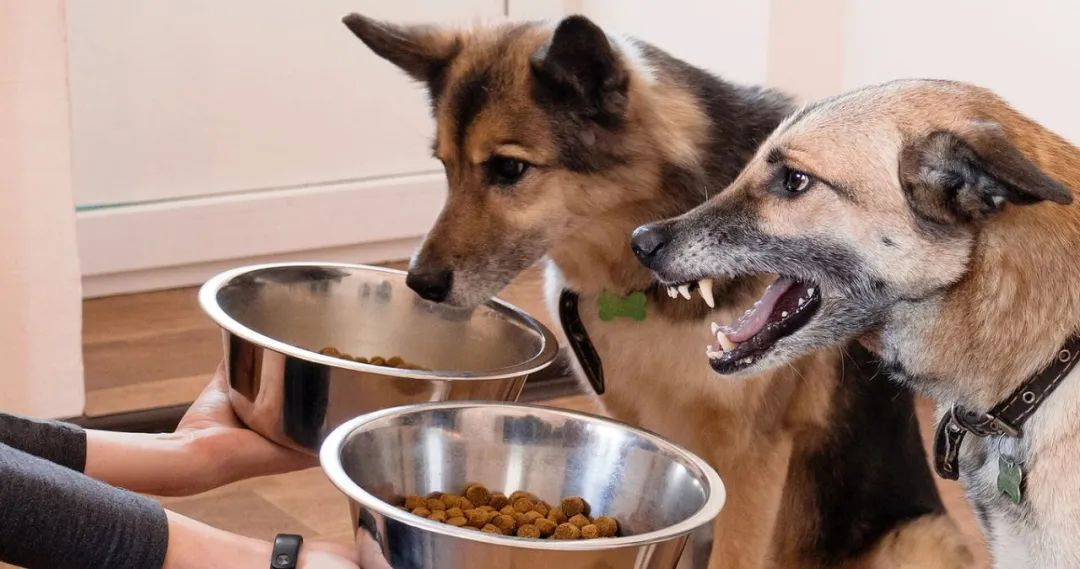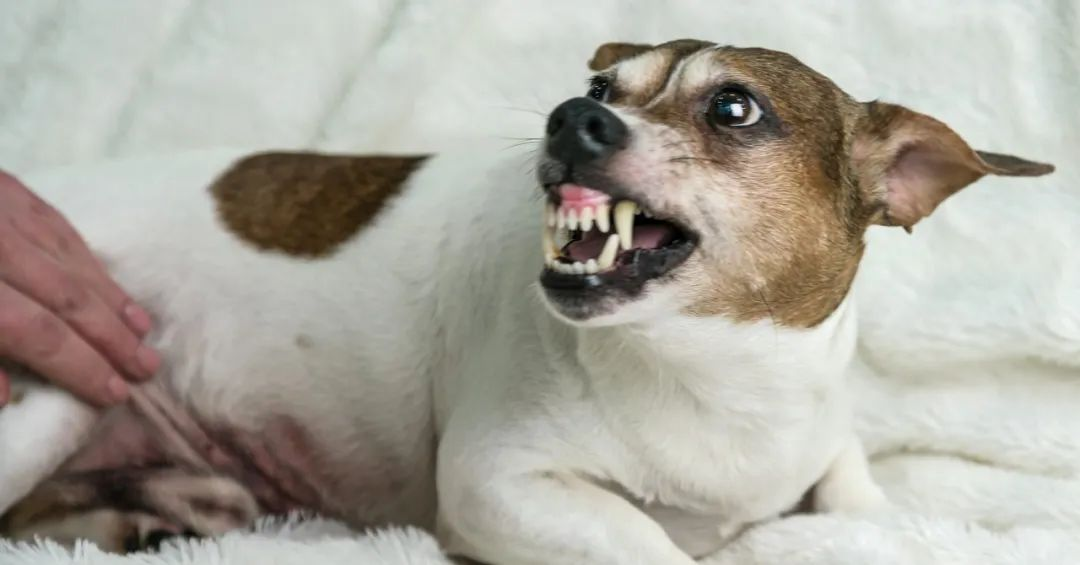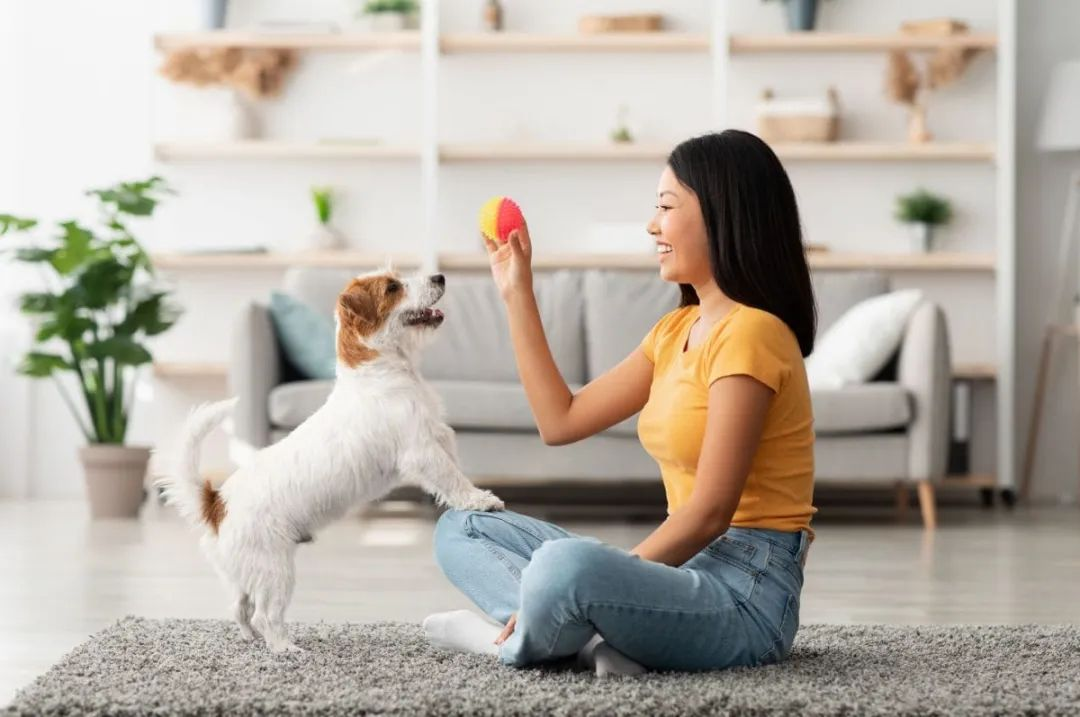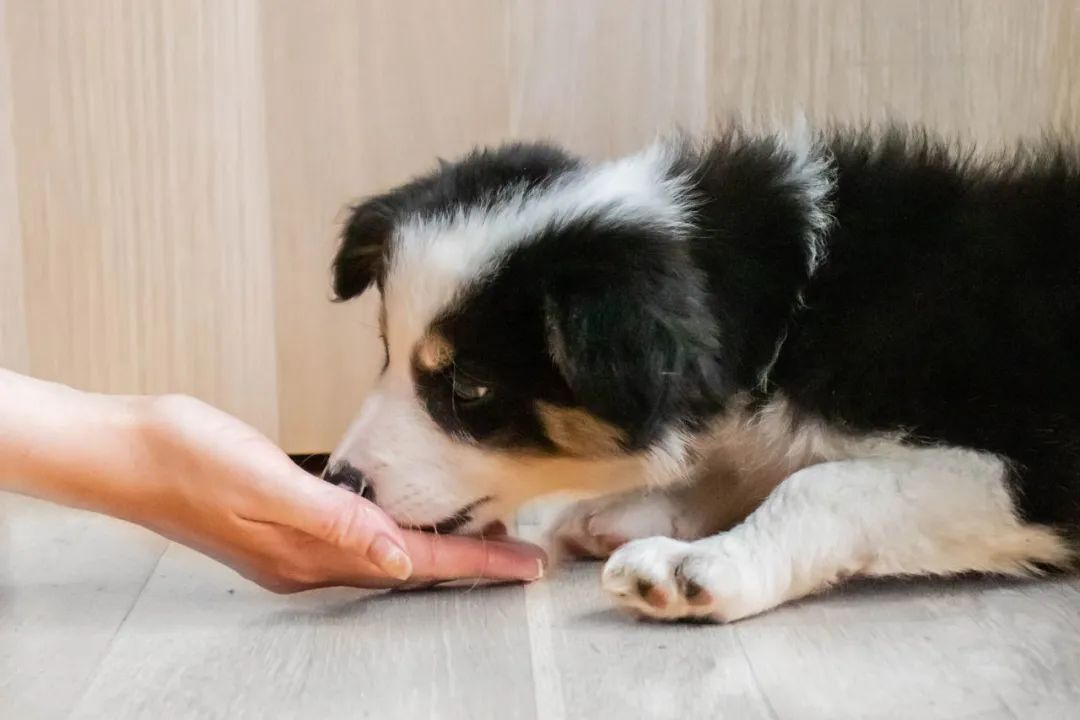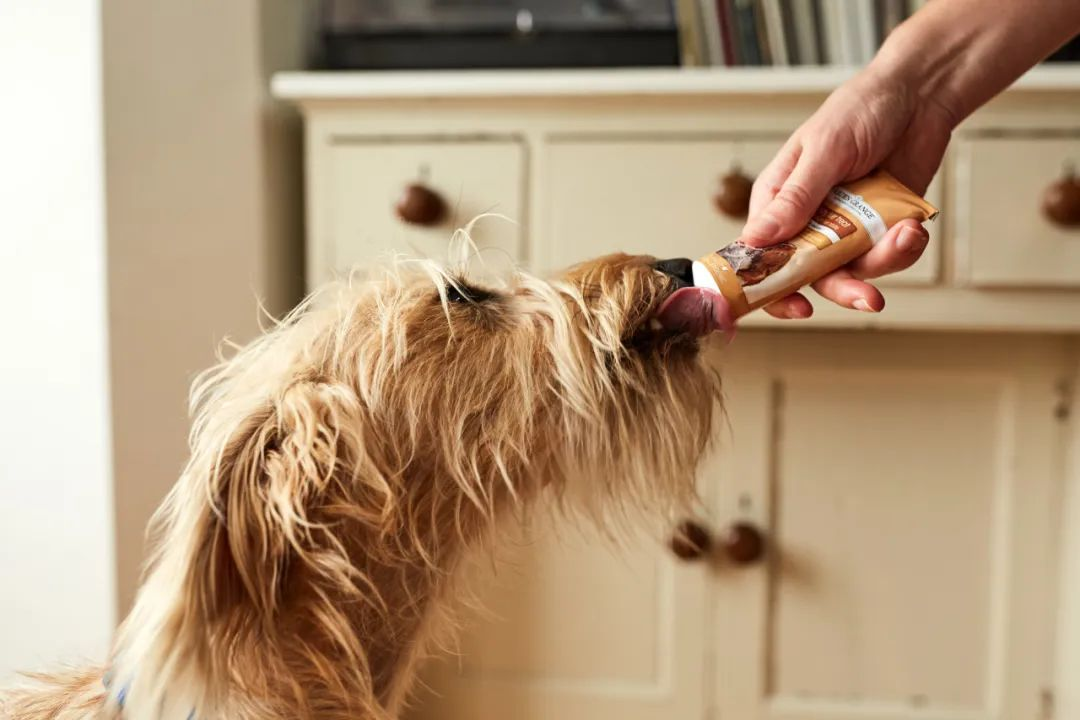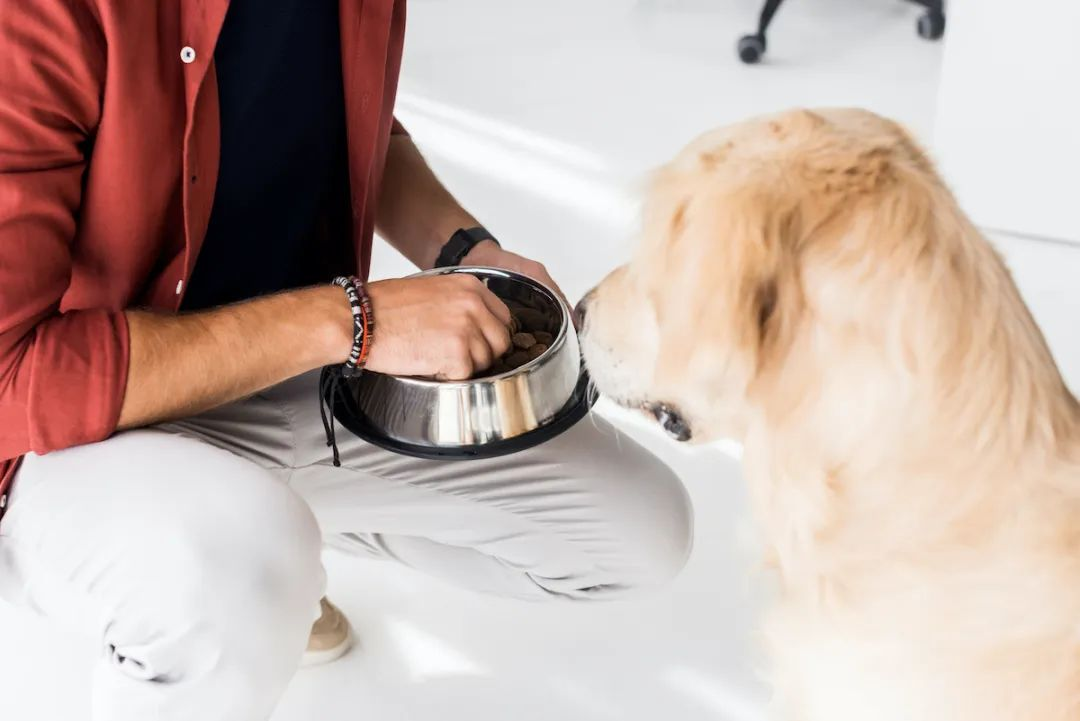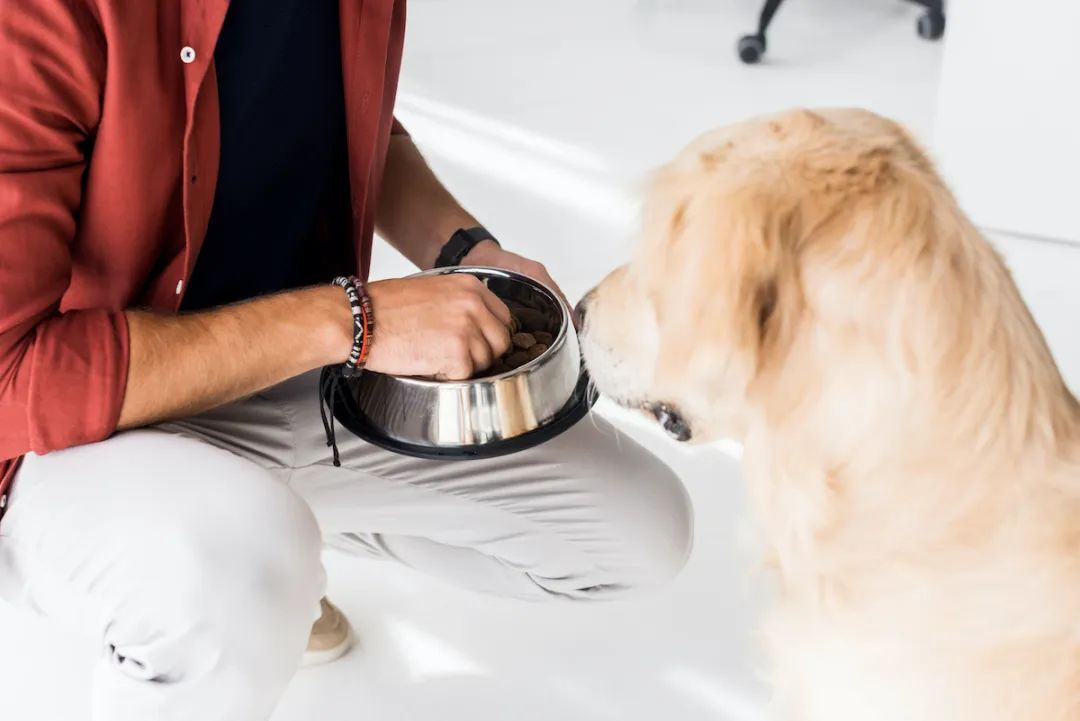Correction of Dog’s Food Protection Behavior Part 2
- one -
In the previous article “Correcting Dog Food Protection Behavior (Part 2)”, we detailed the nature of dog food protection behavior, the performance of dog food protection, and why some dogs exhibit obvious food protection behavior. This article will focus on how dogs who encounter serious food protection problems should try to correct them. We must admit that this corrective behavior is against animal nature, so it will be very difficult and require a long time of training.
Before training, we need to emphasize a few points that pet owners cannot engage in in daily behavior, as these behaviors can lead to more intense dog feeding behavior.
1: Never punish a dog that shows its teeth and roars. One thing to emphasize here is that dogs must be trained and scolded when they growl and show their teeth at people for no reason. But when it comes to eating and protecting food, I do not recommend punishment. Dogs use low growls to tell you that your approach and behavior make them uncomfortable or disgusted, and then watch you take away the food they value. The next time you reach out for it, it is likely to skip the low growl warning and bite directly;
2: Don’t play with your dog’s food and bones with your hands. I know many pet owners will put their hands over the food while the dog is eating, or randomly take away its food or bones to let them know who is the leader of the dog, and the food is under our control. This operation is a misconception about training. When you reach out to take the dog’s food, it only makes it angry and makes it feel like it has lost its food, thereby increasing their desire for protection. I have told some friends before that you can collect food halfway before giving it to the dog, because the food is still yours. Once you give it to the dog, you can only make it sit still, but you cannot snatch it halfway through the meal. Taking away and not taking away are just waiting, which is the difference between losing food and not losing food for dogs.
3: Don’t leave clothes and other things that dogs may like to possess at home. Many dogs like to possess socks, shoes, and other things. In order to reduce the possibility of resource protection, don’t leave socks and other things at home, and put the laundry basket high.
- two -
Dogs are most likely to develop resource conservation (food conservation) habits during their infancy, as they often have to compete with their litter mates for limited food. Many breeders often put food in a bowl for the convenience of breeding, so that the puppies can eat together. This way, the puppies who grab more food will grow stronger and then be able to grab more food. This gradually worsens into 1-2 puppies occupying the majority of the food, leading to the habit of competing for food deeply ingrained in their consciousness.
If the puppy you just brought home does not have a strong feeding habit, it can be easily corrected in the early stages. After the pet owner brings the puppy home, they can feed the first few meals by hand, sit with the dog, and put the dog food in the palm of their hand (remember not to pinch the food with your fingers when feeding dog snacks, but to put the snacks on the flat palm for the dog to lick), and let them lick. When feeding with your hand, you can gently chat with it while caressing it with your other hand. If it shows any signs of vigilance or nervousness, pause first. If the puppy looks calm and happy, you can stick with hand feeding for a few days and switch to bowl feeding. After putting the food in the dog’s bowl, place the bowl on your leg for the puppy to eat. When it eats, continue to chat gently with it and caress its body. After a while, you can start feeding normally. Place the rice bowl on the ground for the dog to eat, and regularly add a particularly delicious snack during the meal, such as beef, chicken, snacks, and so on. If you do this frequently in the first few months of arriving home, the puppy will not feel threatened by your presence and will maintain a relaxed and enjoyable meal in the future.
If the simple methods mentioned above do not work for newly arrived puppies, as pet owners, you will need to enter a long and complex training life. Before improving food protection, as a pet owner, it is necessary to do a good job of “status training” in daily life. Do not let them get on your bed or other furniture, and do not give them snacks that have shown protective desires in the past. After each meal, take away the rice bowl. It is not meal time, and only when your status is above it, do you have the right to demand that it act according to your ideas.
Step 1: When a dog with food protection behavior starts eating, you stand at a certain distance (starting point). What is the distance? Each dog is different, and you need to feel where to stand. It is just vigilant, but there is no fear of being able to eat. Afterwards, you can speak to the dog in a gentle tone, and then throw a delicious and special food into its rice bowl every few seconds, such as chicken, beef, cheese, apples, etc., which it can eat, and it feels that it cherishes more than dog food. Train like this every time you eat, and then move on to the second step after it can easily eat. If your dog sees something delicious coming over to you during training and asks for more snacks, don’t pay attention to it. Wait until he returns to his bowl to eat and continue training. If the dog eats too fast and doesn’t have enough time to complete training, consider using a slow food bowl;
Step 2: After the first step of training is successful, you can easily chat with the dog while taking a step forward from the starting position. After throwing delicious food into the rice bowl, immediately return to the original location, repeating every few seconds until your dog finishes eating. When your dog doesn’t care if you take one step forward and the next meal is fed, your starting position will be at the forward distance and you will start again. Repeat this training until you can stand 1 meter in front of the dog’s bowl and the dog can still easily eat for 10 days. Then you can start the third step;
- three -
Step 3: When the dog starts eating, you can easily chat with the dog from the starting point, walk to the rice bowl, place a few special snacks inside, and then turn back to the starting point, repeating every few seconds until the dog finishes eating. After 10 consecutive days of training, your dog can have a pleasant and reassuring meal, and then you can enter the fourth step;
Step 4: When the dog starts eating, you can easily chat with the dog from the starting point, walk to the rice bowl, slowly bend over and place the snack in your palm, put your hand in front of you, and encourage it to stop eating. After it finishes eating the snack in your hand, immediately get up and leave, and return to the starting point. After repeated training until the dog finishes eating, as it gradually becomes accustomed to this eating method, you can keep placing your hands closer to the direction of the rice bowl and finally reach the distance next to the dog’s rice bowl. After 10 consecutive days of eating with peace and ease, the dog is ready to enter the fifth step;
Step 5: When the dog is eating, you start from the starting point and gently talk while bending down. With one hand, feed the dog the snacks from step 4, and the other hand touch its rice bowl, but do not move it. After the dog has finished eating, you return to the starting point and repeat every few seconds until the end of the meal. After 10 consecutive days of being a dog and being able to easily eat, proceed to step six;
Step 6, this is a crucial training step. When the dog is eating, you start from the starting point and gently speak while standing next to the dog. Hold the snack in one hand but do not give it to the dog. Pick up the rice bowl with the other hand and raise it 10 centimeters in the dog’s line of sight. Place the snack in the bowl, then place the bowl back on the ground and let the dog continue eating. After returning to the starting point, repeat this process every few seconds until the dog finishes eating and stops;
In the following days of training, the height of the rice bowl gradually increases, and at the end, the waist can be straightened to put snacks back on the ground. When everything is safe and easy for the dog to face, you pick up the rice bowl, walk to the nearby table or table, place the special food in the rice bowl, and then return to the dog’s side, put the rice bowl back in its original position for it to continue eating. After repeating this habit for 15 to 30 days, even if the food protection training is basically successful, enter the final seventh step;
The seventh step is to have every family member (excluding children) in the family start the first to sixth steps of training again. Do not think that as the head dog in the family, you can accept things that other family members can also do. Everything needs to be restarted to ensure that the dog will continue to maintain relaxation and happiness during the training process;
Please remember that when dogs bark at you, they just want to communicate with you, even if the communication behavior is a bit exciting, it will not escalate to the point of biting, so you need to evaluate and listen to why they are doing this, and then try to solve the problem.
Post time: Sep-25-2023

